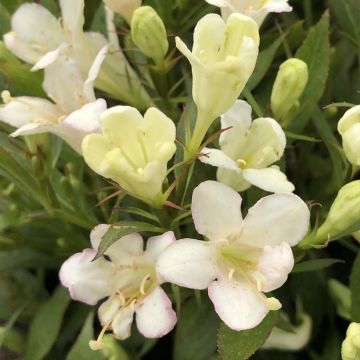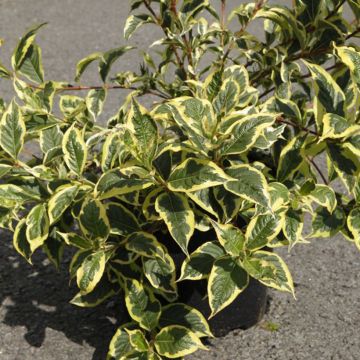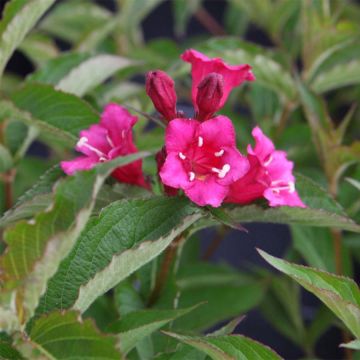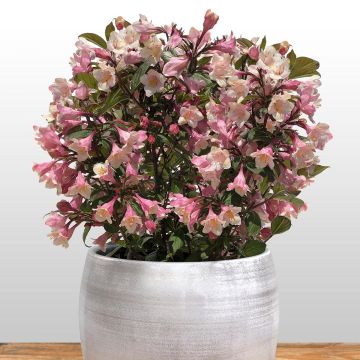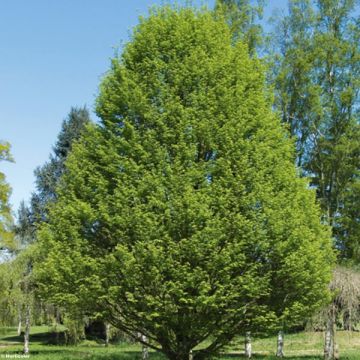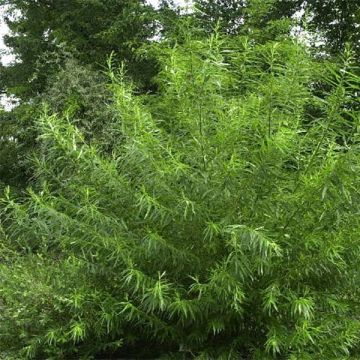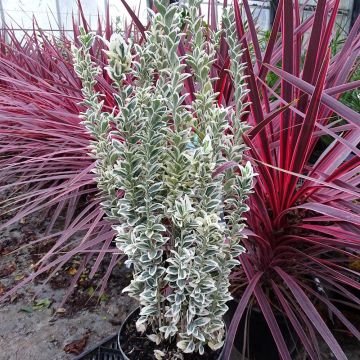

Weigela Red Prince
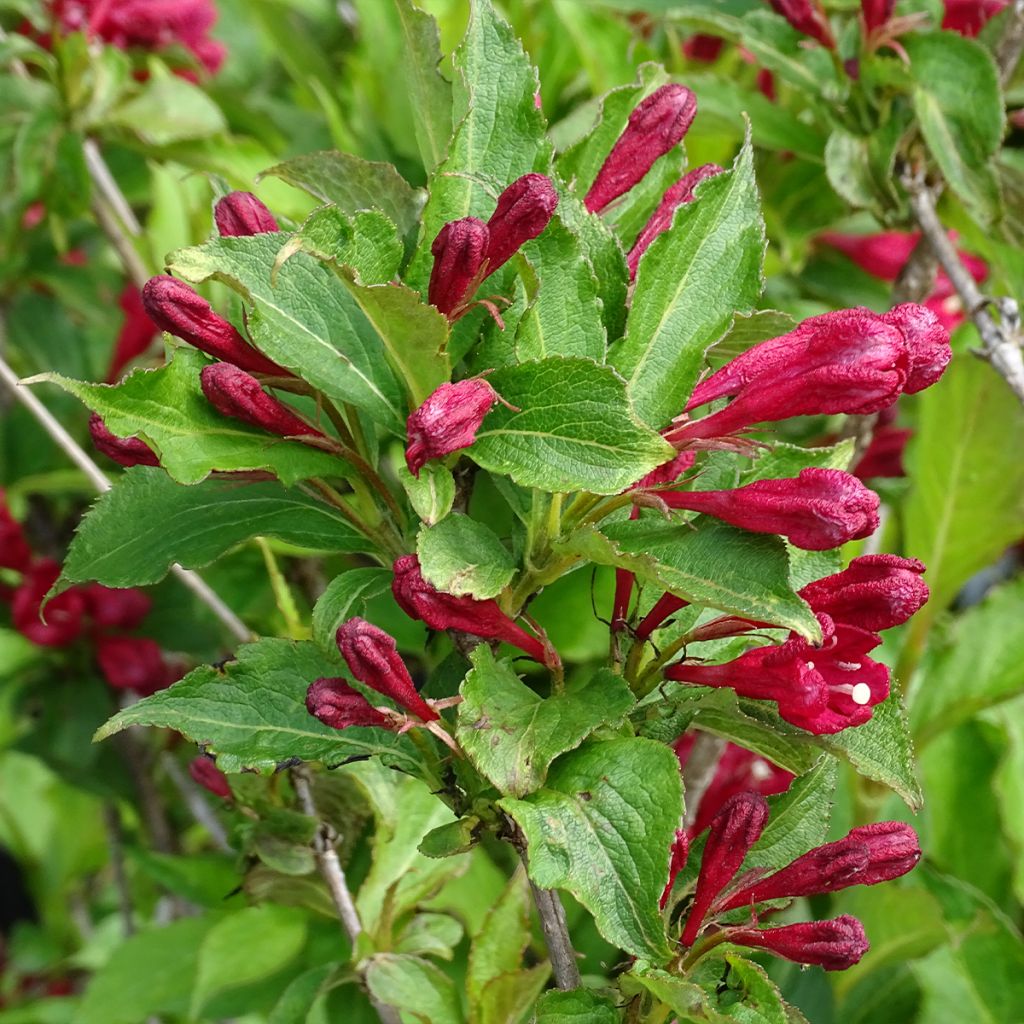

Weigela Red Prince


Weigela Red Prince
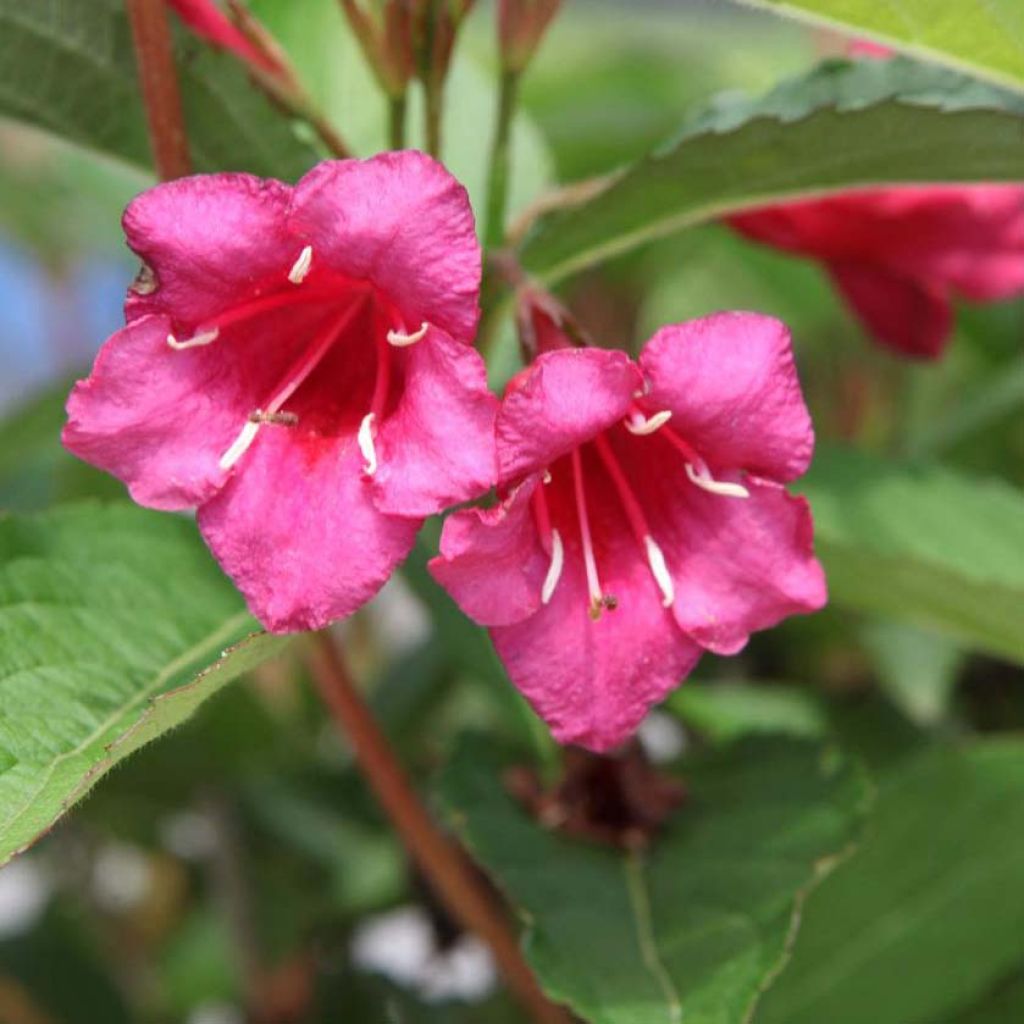

Weigela Red Prince


Weigela Red Prince


Weigela Red Prince
Weigela Red Prince
Weigela x florida Red Prince
Old-fashioned Weigela
This item cannot be shipped to the selected country
Delivery charge from €5.90
Delivery charge from €5.90
More information
Schedule delivery date,
and select date in basket
This plant carries a 24 months recovery warranty
More information
We guarantee the quality of our plants for a full growing cycle, and will replace at our expense any plant that fails to recover under normal climatic and planting conditions.
From €5.90 for pickup delivery and €6.90 for home delivery
Express home delivery from €8.90.
From €5.90 for pickup delivery and €6.90 for home delivery
Express home delivery from €8.90.

Does this plant fit my garden?
Set up your Plantfit profile →
Description
Weigela 'Red Prince' resembles the famous cultivar 'Bristol Ruby', from which it differs by a smaller size and larger flowers. With a graceful, slightly arching habit, this bush transforms from late spring into a fountain loaded with intensely red bell-shaped flowers, slightly fragrant, that fade elegantly. This hybrid variety often reblooms in late summer. Its radiant tone is enhanced by thick, wavy foliage of a beautiful bright green colour. All its qualities have earned it the 'Palme d'Or' of the plant world, an Award of Garden Merit given by the Royal Horticultural Society in England.
Weigelas are Asian, originating from northern China, Japan and Korea, and belong to the Caprifoliaceae family, just like honeysuckles. Weigelia 'Red Prince' is a calcicolous bush (preferring limestone soils), with a moderately fast growth rate, possessing a fibrous and tracing root system that tolerates transplantation perfectly. It has a fairly compact, slightly spreading habit, and eventually forms a ramified bush with trailing branches about 1.25m (4ft 1in) high and 1.40m (4ft 7in) wide, sometimes more depending on the growing conditions. Its funnel-shaped flowers, larger than the type and larger than those of 'Bristol Ruby', measuring 4 to 5cm (1.6 to 2in) long, are a very bright carmine red, slightly lighter in the centre, enhanced by a white style that protrudes from the corolla. They are carried in corymbs, at the ends of the previous year's branches, and bloom abundantly from May to June, then more sporadically in summer. Its deciduous foliage is composed of dark green, sessile leaves, pubescent on the underside, with an oval shape. The lamina, toothed at the edges, of a light green colour and with a particularly wavy texture, turns yellow in autumn before falling.
Hardy down to -20°C, Weigela 'Red Prince' thrives in sunny or semi-shaded positions, in a ordinary, moist but well-drained soil. Its arching and dense habit makes it a highly ornamental bush, with abundant flowering in vibrant shades that bring life to any hedge. In a border, for example, you can give it companions such as Abelia, Cotoneaster, variegated Japanese Euonymus, Kerria japonica, Viburnum carlesii, Mahonias, Hydrangea, variegated dogwoods, Spireas, ornamental brambles, or even a hedge honeysuckle. In the background, the very dark foliage of hollies or yews will provide a beautiful setting for its generous flowering and ensure the winter scenery.
Report an error about the product description
Weigela Red Prince in pictures






Plant habit
Flowering
Foliage
Botanical data
Weigela
x florida
Red Prince
Caprifoliaceae
Old-fashioned Weigela
Cultivar or hybrid
Other Weigela
Planting and care
Hardy up to -20°C (-4 °F), Weigela florida 'Red Prince' thrives in sunny or semi-shady locations. Plant it in a regular, clayey, moist but well-drained soil, with a neutral to slightly alkaline pH, from October to March (excluding the freezing period). To maintain a compact habit and promote abundant flowering, shorten the branches that have borne the spring flowers by 2/3, just after the flowering.
Planting period
Intended location
Care
-
, onOrder confirmed
Reply from on Promesse de fleurs
Hedge shrubs
Haven't found what you were looking for?
Hardiness is the lowest winter temperature a plant can endure without suffering serious damage or even dying. However, hardiness is affected by location (a sheltered area, such as a patio), protection (winter cover) and soil type (hardiness is improved by well-drained soil).

Photo Sharing Terms & Conditions
In order to encourage gardeners to interact and share their experiences, Promesse de fleurs offers various media enabling content to be uploaded onto its Site - in particular via the ‘Photo sharing’ module.
The User agrees to refrain from:
- Posting any content that is illegal, prejudicial, insulting, racist, inciteful to hatred, revisionist, contrary to public decency, that infringes on privacy or on the privacy rights of third parties, in particular the publicity rights of persons and goods, intellectual property rights, or the right to privacy.
- Submitting content on behalf of a third party;
- Impersonate the identity of a third party and/or publish any personal information about a third party;
In general, the User undertakes to refrain from any unethical behaviour.
All Content (in particular text, comments, files, images, photos, videos, creative works, etc.), which may be subject to property or intellectual property rights, image or other private rights, shall remain the property of the User, subject to the limited rights granted by the terms of the licence granted by Promesse de fleurs as stated below. Users are at liberty to publish or not to publish such Content on the Site, notably via the ‘Photo Sharing’ facility, and accept that this Content shall be made public and freely accessible, notably on the Internet.
Users further acknowledge, undertake to have ,and guarantee that they hold all necessary rights and permissions to publish such material on the Site, in particular with regard to the legislation in force pertaining to any privacy, property, intellectual property, image, or contractual rights, or rights of any other nature. By publishing such Content on the Site, Users acknowledge accepting full liability as publishers of the Content within the meaning of the law, and grant Promesse de fleurs, free of charge, an inclusive, worldwide licence for the said Content for the entire duration of its publication, including all reproduction, representation, up/downloading, displaying, performing, transmission, and storage rights.
Users also grant permission for their name to be linked to the Content and accept that this link may not always be made available.
By engaging in posting material, Users consent to their Content becoming automatically accessible on the Internet, in particular on other sites and/or blogs and/or web pages of the Promesse de fleurs site, including in particular social pages and the Promesse de fleurs catalogue.
Users may secure the removal of entrusted content free of charge by issuing a simple request via our contact form.
The flowering period indicated on our website applies to countries and regions located in USDA zone 8 (France, the United Kingdom, Ireland, the Netherlands, etc.)
It will vary according to where you live:
- In zones 9 to 10 (Italy, Spain, Greece, etc.), flowering will occur about 2 to 4 weeks earlier.
- In zones 6 to 7 (Germany, Poland, Slovenia, and lower mountainous regions), flowering will be delayed by 2 to 3 weeks.
- In zone 5 (Central Europe, Scandinavia), blooming will be delayed by 3 to 5 weeks.
In temperate climates, pruning of spring-flowering shrubs (forsythia, spireas, etc.) should be done just after flowering.
Pruning of summer-flowering shrubs (Indian Lilac, Perovskia, etc.) can be done in winter or spring.
In cold regions as well as with frost-sensitive plants, avoid pruning too early when severe frosts may still occur.
The planting period indicated on our website applies to countries and regions located in USDA zone 8 (France, United Kingdom, Ireland, Netherlands).
It will vary according to where you live:
- In Mediterranean zones (Marseille, Madrid, Milan, etc.), autumn and winter are the best planting periods.
- In continental zones (Strasbourg, Munich, Vienna, etc.), delay planting by 2 to 3 weeks in spring and bring it forward by 2 to 4 weeks in autumn.
- In mountainous regions (the Alps, Pyrenees, Carpathians, etc.), it is best to plant in late spring (May-June) or late summer (August-September).
The harvesting period indicated on our website applies to countries and regions in USDA zone 8 (France, England, Ireland, the Netherlands).
In colder areas (Scandinavia, Poland, Austria...) fruit and vegetable harvests are likely to be delayed by 3-4 weeks.
In warmer areas (Italy, Spain, Greece, etc.), harvesting will probably take place earlier, depending on weather conditions.
The sowing periods indicated on our website apply to countries and regions within USDA Zone 8 (France, UK, Ireland, Netherlands).
In colder areas (Scandinavia, Poland, Austria...), delay any outdoor sowing by 3-4 weeks, or sow under glass.
In warmer climes (Italy, Spain, Greece, etc.), bring outdoor sowing forward by a few weeks.



































